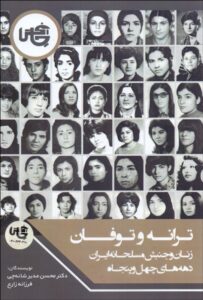 Song and Storm: Women and the Armed Struggle in Iran 1940s-1950s
Song and Storm: Women and the Armed Struggle in Iran 1940s-1950s
Mohsen Modir-Shanechi and Farzane Zaare
Chapkhash, Tehran, 2021
The book Song and Storm analyzes the role of women in armed struggles in Iran during the 1940s and 1950s by examining their memoirs and writings across five chapters. The first chapter is an overview of the political, economic, social and cultural conditions of the time, as well as the country’s foreign relations and political parties. The second chapter focuses on guerrilla groups and organizations, including the Iranian People’s Fedai Guerrillas, the People’s Mujahedin Organization, and other leftist armed groups. The third chapter examines women’s political and social activism throughout Iran’s contemporary history, including their participation in the Constitutional Revolution, and how improvements of women’s access to higher education during the Pahlavi era facilitated their involvement in political movements. The fourth chapter explores women’s participation in various forms of resistance against the Pahlavi regime, with a particular focus on their role in guerrilla organizations and studying female fighters within the Fadaei and Mojahedin groups. The final chapter presents the author’s concluding remarks, synthesizing insights from the previous chapters.
 Revolutionary Bodies: Technologies of Gender, Sex, and Self in Contemporary Iran.
Revolutionary Bodies: Technologies of Gender, Sex, and Self in Contemporary Iran.
Kristin Soraya Batmanghelichi
Bloomsbury Publishing, New York 2020
Gender and sexuality in modern Iran are frequently examined through the prism of nationalist symbols and religious discourse from the late nineteenth and early twentieth centuries. In this book, Kristin Soraya Batmanghelichi takes a different approach, by interrogating how normative ideas of women’s bodies in state, religious, and public health discourses have resulted in the female body being deemed as immodest and taboo. Through a diverse blend of sources -a popular cultural women’s journal, a red-light district, cases studies of temporary marriages, iconic public statues, and an HIV-AIDS advocacy organization in Tehran – this work argues that conceptions of gender and sexuality have been mediated in public discourse and experienced and modified by women themselves over the past thirty years of the Islamic Republic.
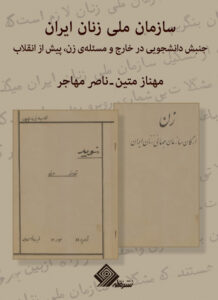 The National Organization of Iranian Women: The Student Movement Abroad and the Women’s Issue Before the Revolution
The National Organization of Iranian Women: The Student Movement Abroad and the Women’s Issue Before the Revolution
Mahnaz Matin and Nasser Mohajer
Noghteh Publishing, France, 2022
The National Organization of Iranian Women, founded in December 1964 in close connection with the World Confederation of Iranian Students (National Union), was the first organization established by Iranian women outside the country. Although short-lived, its history provides a foundation for understanding how the main leftist and democratic forces of the time approached the women’s movement and the challenges that later shaped their policies leading up to the 1979 Revolution and its aftermath. The first part of this book examines the organization’s background and formation, the intellectual principals of its founders, their awareness of women’s issues, their ideals and goals, its relationship with the Confederation, its achievements, and the obstacles that led to its early dissolution. The second part features interviews with some of the organization’s founders and members, offering their narratives and reflections on their experiences. The final section presents a collection of historical documents for readers.
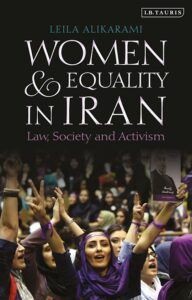 Women and Equality in Iran: Law, Society and Activism
Women and Equality in Iran: Law, Society and Activism
Leila Alikarami
Bloomsbury Publishing 2019
Iran’s continued retention of discriminatory laws stands in stark contrast to the advances Iranian women have made in other spheres since the Revolution in 1979. Leila Alikarami here aims to determine the extent to which the actions of women’s rights activists have led to a significant change in their legal status. She argues that while Iranian women have not yet obtained legal equality, the gender bias of the Iranian legal system has been successfully challenged and has lost its legitimacy. More pertinently, the social context has become more prepared to accommodate legal rights for women. Highlighting the key challenges that proponents of gender equality face in the Muslim context, Alikarami attempts to ascertain the causes of Iran’s failure to ratify the CEDAW and questions whether and to what extent interpretations of Islamic principles prevent Iran from doing so. AliKarami’s PhD research at University of London-SOAS formed the basis of this book.
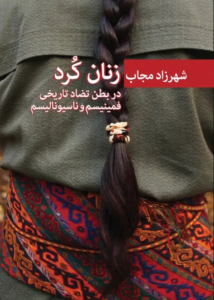 Kurdish Women at the Heart of the Historical Conflict between Feminism and Nationalism
Kurdish Women at the Heart of the Historical Conflict between Feminism and Nationalism
Shahrzad Mojab
Asmana, Canada, 2023
This book is the result of decades of the author’s research on the struggles of Kurdish women in the Middle East and the diaspora, examining their lives and activism throughout the 20th century. It consists of a preface, six chapters, and a Key Concepts section, which could be useful for future research. The first chapter, Kurdish Women Throughout History, explores their historical roles women have played in Kurdish communities. The second chapter examines the lives of Kurdish women across five neighboring countries. The third chapter is dedicated to the historical experience of Kurdish women in the Republic of Kurdistan (1946). In the fourth chapter, the author analyzes various aspects of the lived experiences of Kurdish women, particularly those who have faced widespread gender-based violence in Iraqi Kurdistan. The fifth chapter titles Kurdish Women in the Endless Cycle of Destruction and Reconstruction. Finally, the sixth chapter presents a sociological study of the role of Kurdish women in the diaspora and their engagement in transnational feminist struggles.
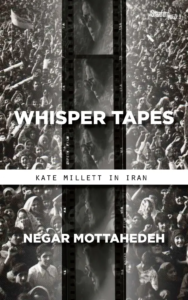 Whisper Tapes: Kate Millett in Iran
Whisper Tapes: Kate Millett in Iran
Negar Mottahedeh
Stanford University Press 2019
Kate Millett was already an icon of American feminism when she went to Iran in 1979. She arrived just weeks after the Iranian Revolution, to join Iranian women to celebrate International Women’s Day. Millett, armed with film equipment and a cassette deck to record everything around her, found herself in the middle of demonstrations for women’s rights and against the mandatory veil. Millett documented her experience, later publishing Going to Iran in 1982. Various researchers have inspired by recorded documents, but this time, Negar Mottahedeh offers a new interpretation of women’s, and revolutionary men opposing them, by studying the audio tapes Millett recorded. Inspired by Foucauldian view the author argues that Millett failed to grasp the second, contextualized narrative, captured in the shouts and quiet conversations in Persian, which does not align with Millett’s narrative of the protests. However, Mottahedeh does not go further into analyzing Millett’s book.
 The Women’s Patriotic Society of Iran (1902-1935)
The Women’s Patriotic Society of Iran (1902-1935)
Mohammad Hossein Khosropanah
Khajasteh Publishing, Tehran, 2018
In this book, Khosropanah describes the Iranian women’s movement from 1906 to 1935 as a modernist and largely non-political movement that developed gradually and independently of the government. Women pursued their goals and demands by establishing organizations and publishing newspapers and magazines. One of their most enduring organizations of this period was the Jam’iyat-e Nesvan-e Vatan-khah-e Iran (Society of Patriotic Women of Iran). The first section of this book explores how the society was formed, its activities, the challenges and obstacles it faced, and the reasons for its dissolution. The second section provides a complete list of the issues of the Jam’iyat-e Nesvan-e Vatan-khah-e Iran Journal (1902-1903) and a selection of articles and contents from the magazine.
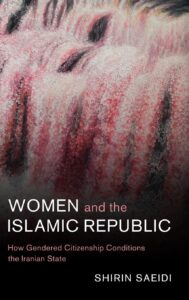 Women and the Islamic Republic: How Gendered Citizenship Conditions the Iranian State
Women and the Islamic Republic: How Gendered Citizenship Conditions the Iranian State
Shirin Saeidi
Cambridge University Press 2022
Women and the Islamic Republic offers an in-depth analysis of the role of non-elite Iranian women in state-formation processes both before and after the Islamic Revolution in 1979. Shirin Saeidi highlights the significance of citizenship practices in gaining a deeper understanding of post-revolutionary state-building in Iran. Her extensive research examines practices shaped by the gendered legacies of the Iran–Iraq War, the resistance of leftist women in prisons during that time, and feminist activists’ responses to the state’s project of reproducing itself through undermining feminist projects. Saeidi’s book is based on her extensive Ph.D. research which uses a multimethod approach and includes 24 months of ethnographic fieldwork among Iranian female activists in Iran, Sweden, Germany, and the United Kingdom; in-depth interviews with former prisoners; her active participation in their religious ceremonies and gatherings; and an analysis of their memoirs.
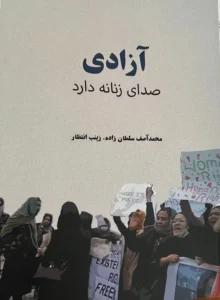 Freedom Has a Feminine Voice
Freedom Has a Feminine Voice
Mohammad Asif Sultanzada and Zeynab Entezar
Bita Publishing, Denmark, 2023
385 pages
Farsi
This book is a collection of notes and writings by Afghan women activists, reflecting on their experiences of the situation of women after the return of the Taliban.The collection includes notes on the history of women’s rights in Afghanistan and their struggles for freedom and equality, but they mainly highlight the violations of women’s rights by the Taliban regime and the daily challenges of life under its rule. Among these challenges is Afghanistan’s patriarchal culture, which welcomes Taliban-imposed restrictions and views women’s financial independence as a threat to men’s authority within the family and their role as the sole breadwinner and guardian. Many men do not support protesting women, as these protests are not only against the Taliban but also against the misogynistic behavior of men within families and society. This book illustrates how, despite all hardships, these women continue to fight for their freedom and rights. This book has been republished by Ney Publishers in Tehran under the title The Voice of Freedom.
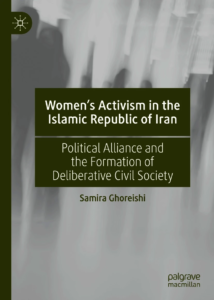 Women’s activism in the Islamic Republic of Iran: Political alliance and the formation of deliberative civil society
Women’s activism in the Islamic Republic of Iran: Political alliance and the formation of deliberative civil society
Samira Ghoreishi
Palgrave Macmillan 2021
Through an intersectional feminist re-reading of the Habermasian theoretical framework, this book analyses how women’s activism has developed and operated in the Islamic Republic of Iran. Chapters look at three key areas of women’s activism in Iran: how women deliberately engaged with media activism despite the government’s controlling and repressive policies; women’s involvement in civil society organisations, institutions and communities, and cooperation through multilevel activism; and women’s activism in the political sphere and its connection with media and civil society activism despite the theocratic system. Drawing upon interviews, analyses of journal and newspaper articles and documentary/non-documentary films, as well as personal experiences, observations and communications, the book examines to what extent Iranian women’s rights’ groups and activists have collaborated not only with each other but with other social groups and activists to help facilitate the formation of a pluralist civil society capable of engaging in deliberative processes of democratic reform. This book builds on her PhD research at Politics and International Relations at The University of Auckland, New Zealand.
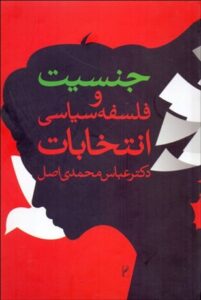 Gender and Political Philosophy of Elections
Gender and Political Philosophy of Elections
Abbas Mohammadi Asl
Roshangaran, Tehran, 2017
This book examines women’s role in the public sphere as a vital aspect of sustainable development, emphasizing that education and professional training enable their participation alongside men. Without this integration, investments in women’s human capital remain ineffective. However, fostering their engagement requires a shift in societal values and behaviors. Despite this need, no policy has been introduced to reduce women’s dual burden of household and professional work. Their participation in elections, both as voters and candidates, is crucial for equitable governance. Without women’s legislative involvement, sustainable development—measured by social justice—remains unattainable. The book explores gender and power in the public sphere, participation in legislation, electoral politics, citizenship, and self-determination.
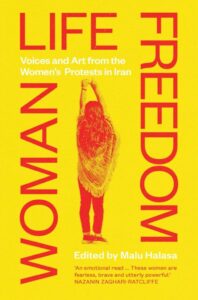 Woman Life Freedom: Voices and Art from the Women’s Protests in Iran
Woman Life Freedom: Voices and Art from the Women’s Protests in Iran
Malu Halasa (ed.)
Saqi Books 2023
Previously an editor-at-large for Portal 9 in Beirut, Lebanon, Malu Halasa is currently the literary editor of the Middle Eastern arts magazine The Markaz Review. Her edited volume, Woman Life Freedom, captures the historic Jina Movement in Iran through artwork and first-person narratives, as activists and artists document history in real time. This striking collection goes behind the scenes at forbidden fashion shows; records the sound of dissent in Iran where it is illegal for women to sing unaccompanied in public; and follows ‘The Smarties’—Gen Z women—through the streets of Tehran. Extolling the power of art, writing and body politics – both female and queer – this collection is a universal rallying call and a celebration of the women the regime has tried and failed to silence. This is what protest looks like.
* Summaries are adapted from publishers’ websites with minor edits.
ISSN 2818-9434




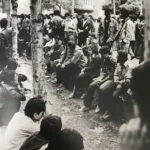
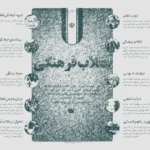


Comments are closed.